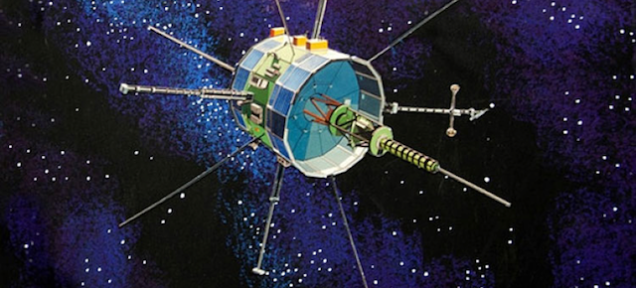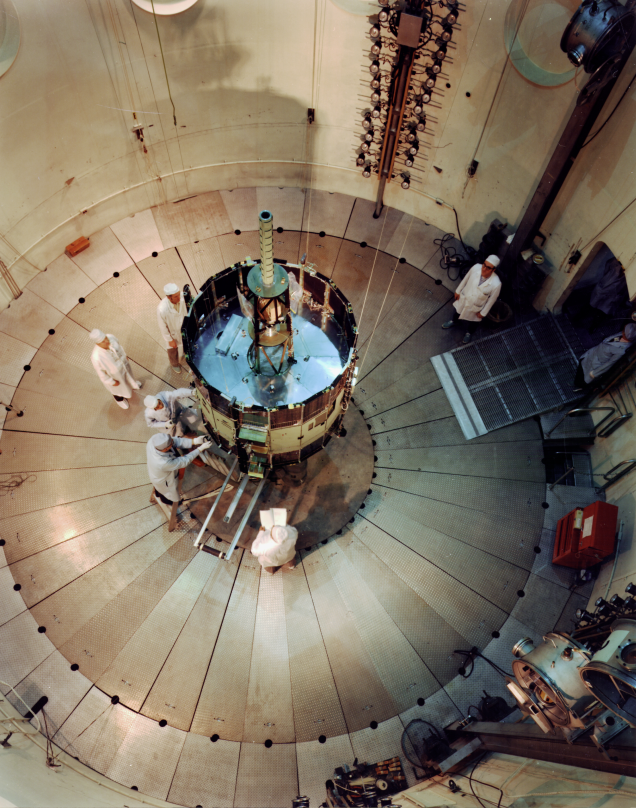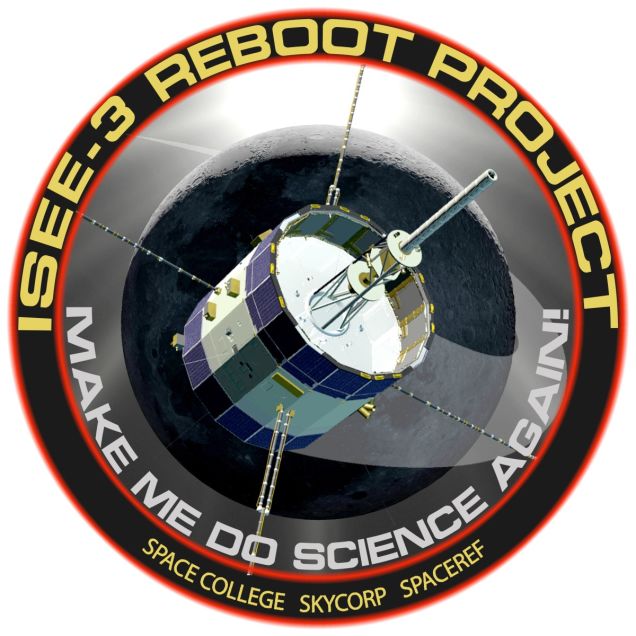Via GIZMODO
-----

NASA officially granted permission
to a group of scientists and enthusiasts who want to do what NASA can't
afford: Make contact with a 36-year-old satellite called ISEE-3 that's
still capable of taking directions for a new mission. It's the first
agreement of its kind—and it could hint at where the space industry is
going.
So, a little back story. As our sister site io9 explained last month,
ISEE-3 was launched back in 1978 to study the relationship between the
Sun and Earth. It enjoyed many more missions over the next three
decades, but NASA officially cut the cord in 1997. Still, ISEE-3 kept on
trucking.
It
wasn't until a decade later that NASA discovered she was still at it,
despite the lack of commands from her benefactors at NASA. Why not send
her on a new mission? Well, that's the trouble: We have no way of
communicating. The antenna used to contact ISEE-3 had been removed.
Enter
the group of scientists including SkyCorp, SpaceRef, Space College
Foundation, and others. They want to use a different antenna, at
Morehead State University, to contact ISEE-3. "Our plan is simple: we
intend to contact the ISEE-3 spacecraft, command it to fire its engines
and enter an orbit near Earth, and then resume its original mission,"
said Keith Cowing, a former Nasa engineer and owner of Nasa Watch, told the Guardian.

The ISEE-3, (later ICE), undergoing testing and evaluation.
Sounds
good, right? Well, it's not so simple. The group, which calls itself
ISEE-3 Reboot, needs to essentially rebuild the entire software used to
communicate with ISEE-3 back in the 70s. That means digging through
archives to find the original commands, then recreating them. With zero
funding available from NASA and only a month or two until the little
satellite makes a close pass in mid-June. The technical challenges are
huge:
We
need to initiate a crash course effort to use 'software radio' to
recreate virtual versions all of the original communications hardware
that no longer physically exists. We also need to cover overhead
involved in operating a large dish antenna, locating and analyzing old
documentation, and possibly some travel.
But, the creators of the project explained in their pitch letter on Rockethub, "if we are successful it may also still be able to chase yet another comet."
If
there was any doubt about whether modern Americans were still enamored
with space, the results of their crowdfunding campaign squash it. The
group blew through their $100,000 goal, and are currently getting close
to a $150,000 stretch goal. There are only two days left to donate—and you should—but the fact that they've raised so much money in so short a time is remarkable.

The ISEE-3 Reboot mission patch.
NASA announced it has signed an agreement with the group called a Non-Reimbursable Space Act Agreement
(NRSAA), which is a contract it signs with its external partners to
describe a collaboration. It gives the group the green light to go ahead
and make its attempt at taking control of ISEE-3—it essence, it gives
Skycorp the right to take over the operation of a satellite that NASA
built almost 40 years ago.
Here's what astronaut John Grunsfeld had to say about the agreement:
The
intrepid ISEE-3 spacecraft was sent away from its primary mission to
study the physics of the solar wind extending its mission of discovery
to study two comets. We have a chance to engage a new generation of
citizen scientists through this creative effort to recapture the ISEE-3
spacecraft as it zips by the Earth this summer.
It's
an incredible development—and it tells us something about where space
travel and research is going. NASA and other state-funded research
entities are being strangled by downsized budgets, but the push into
space amongst independent scientists, engineers, and citizens is
booming. As Elon Musk sues to let commercial space companies compete for government contracts, students and scientists are launching their own satellites.
Over
the next few decades, plenty of other NASA-built spacecraft will begin
to age—just like ISEE-3. And unless something drastic changes about
NASA's budget, it may not have the cash to keep them up. Imagine a
future in which craft built by NASA in the 70s, 80s, and 90s, are
inherited by independent groups of scientists and space companies who
take over operations, just like Skycorp is. The privatization of space
might not be so far away—and NASA might play a heavy role in its
creation.



